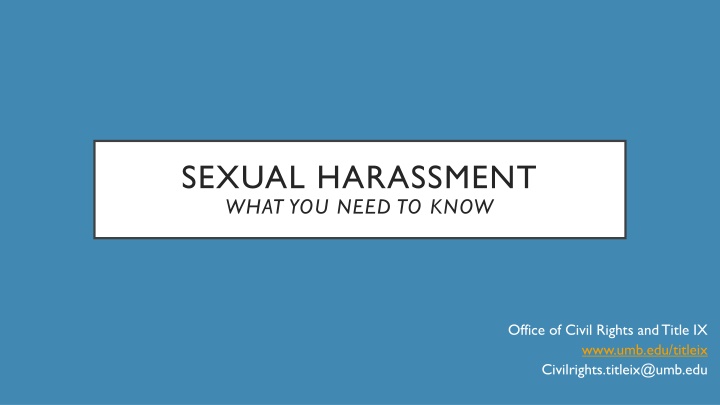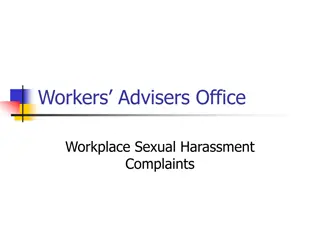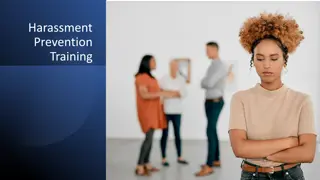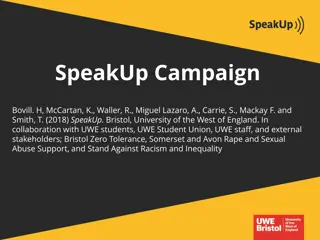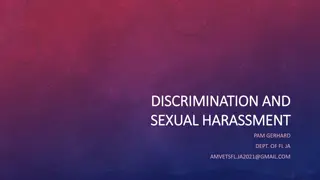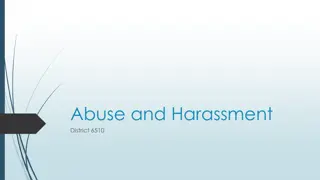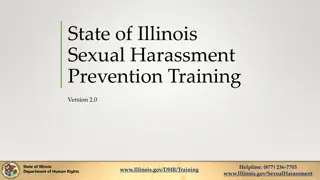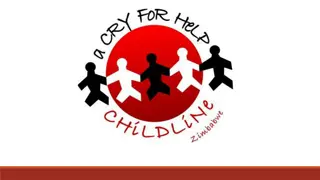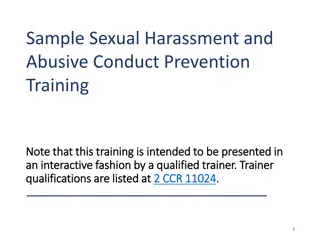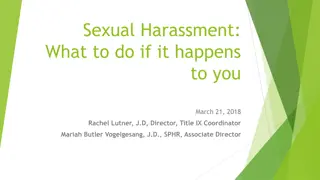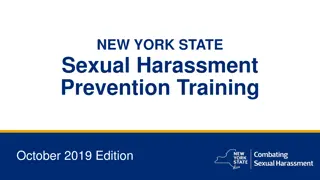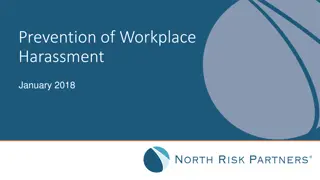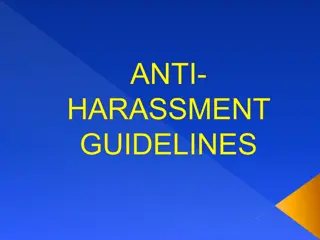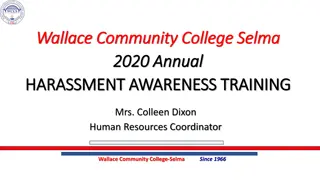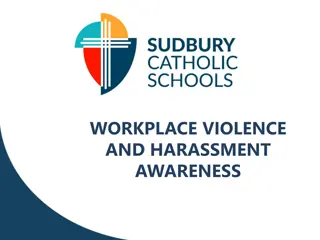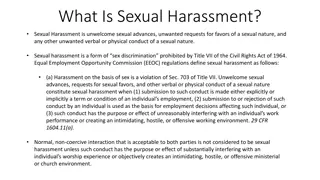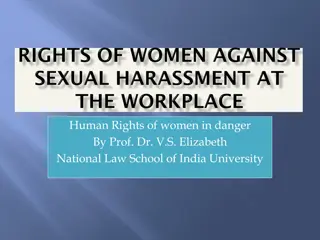SEXUAL HARASSMENT
This informative content covers the essentials of sexual harassment, including terms, definitions, staff contacts, reporting procedures, and policies. It addresses the importance of recognizing and addressing sexual harassment in educational and professional environments, providing valuable insights for individuals experiencing or witnessing such misconduct.
Download Presentation

Please find below an Image/Link to download the presentation.
The content on the website is provided AS IS for your information and personal use only. It may not be sold, licensed, or shared on other websites without obtaining consent from the author.If you encounter any issues during the download, it is possible that the publisher has removed the file from their server.
You are allowed to download the files provided on this website for personal or commercial use, subject to the condition that they are used lawfully. All files are the property of their respective owners.
The content on the website is provided AS IS for your information and personal use only. It may not be sold, licensed, or shared on other websites without obtaining consent from the author.
E N D
Presentation Transcript
SEXUAL HARASSMENT WHAT YOU NEED TO KNOW Office of Civil Rights and Title IX www.umb.edu/titleix Civilrights.titleix@umb.edu
AGENDA CRTIX Team Terms and Definitions What to Do If You or Others Have/Are Experiencing Sexual Harassment How to Report After a Report is Filed Retaliation Policy Questions?
CIVIL RIGHTS AND TITLE IX STAFF AT UMB Ezana Estifanos Civil Rights Investigator Ezana.Estifanos@umb.edu Brigid Harrington Director, Office of Civil Rights and Title IX brigid.harrington@umb.edu
CIVIL RIGHTS AND TITLE IX STAFF AT UMB CONT. Shawn DeVeau Ashlee Carter, PhD Investigator for Student Concerns ashlee.carter@umb.edu Associate Dean of Students & Deputy Title IX Coordinator shawn.deveau@umb.edu
TERMS AND DEFINITIONS Harassment Harassment is conduct by a person or persons against another person or persons based upon their legally protected class; unreasonably interfering with a person or person s employment, educational benefits, academic grades or opportunities, or participation in university programs or activities; or b) unreasonably interfering with a person or person s work or academic performance; or c) creating an intimidating, hostile, or offensive working or academic environment
TERMS AND DEFINITIONS CONT. Hostile Environment When the discriminatory harassment is sufficiently severe or pervasive to interfere with an employee s professional performance, or to deny or limit a student s ability to participate in or benefit from the university s programs or activities based on sex. To make the ultimate determination of whether a hostile environment exists, university considers factors related to the severity, persistence, and/or pervasiveness of the sexual harassment, including: (1) the type, frequency, and duration of the conduct; (2) the identity and relationships of persons; (3) the number of individuals; (4) the location and the context in which it occurred; and (5) degree to which the conduct affected one or more person s education or employment.
TERMS AND DEFINITIONS CONT. Gender-Based Harassment form of sexual harassment on the basis of gender, gender identity, gender expression, sexual orientation, or failure to conform to stereotypical notions of masculinity or femininity. Examples: using derogatory comments and terms toward a male or female who do not act in ways that align with their gender stereotype, such as a male being called names for being interested in the arts or a female being called names for being interested in construction; telling someone to use a restroom that does not align with that person s gender identity; and making generalized derogatory comments about one gender, such as all females are ______ or all males are _______.
IF BEHAVIOR DOESNT FALL UNDER TITLE IX In August 2019, the definitions outlined within the federal Title IX policy shifted slightly. We will still hold students accountable. For behavior that may not fall within the definitions outlined by Title IX, it may fall within the definitions outlined in the Student Code of Conduct.
WHAT TO DO IF YOU OR OTHERS HAVE/ARE EXPERIENCING SEXUAL HARASSMENT Confide in an advisor/Coach Consult with the University s Counseling Center Report the offense (info on next slide) Utilize services as needed (DOS and/or CRTIX can offer accommodations and services as needed)
HOW TO REPORT There are a few ways to report sexual harassment Tell your Coach/other staff member File a Maxient report (go to the UMB homepage, and in search box, type in Maxient ) https://cm.maxient.com/reportingform.php?UMassBoston&layout_id=2 In cases where a crime has potentially been committed, a victim can report a complaint directly to the UMass Boston Police Department at 617.287.1212.
AFTER A REPORT IS FILED Report will be reviewed by CRTIX to determine if the situation falls within the scope of Title IX Supportive measures will be offered/discussed In some cases, informal resolution may be offered In some cases, a formal investigation may commence Investigation Live Hearing Right to appeal For more information or to review the full grievance procedure, please visit www.umb.edu/titleix
RETALIATION Don t do it. Retaliation is the interference through intimidation, including threats, coercion, or unlawful discrimination, with an individual s right or privilege secured under the law [Title IX of the Education Amendments of 1972, Title VII of the Civil Rights Act of 1964, the Violence Against Women Act of 1994, the Massachusetts antidiscrimination laws, or other laws] or interfering with an individual s right to make a complaint, testify, assist, or participate in any manner in an investigation, proceeding or hearing, or to intervene to prevent a violation of this policy.
